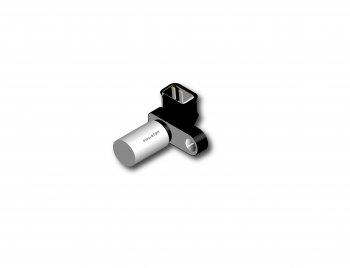
PicoScope 7 Automotive
Available for Windows, Mac, and Linux, the next evolution of our diagnostic scope software is now available.

Multimeter Probes

Back-pinning Probe Set

Flexible Back-pinning Probe

Large Dolphin/Gator Clips
*At Pico we are always looking to improve our products. The tools used in this guided test may have been superseded and the products above are our latest versions used to diagnose the fault documented in this case study.
The purpose of this test is to evaluate the operation of an inductive Camshaft Position (CMP) sensor from its output voltage.
View connection guidance notes.
This known good waveform has the following characteristics:


A CMP sensor signals one or more fixed camshaft reference positions to the Engine Control Module (ECM), for example, the arrival of cylinder one intake stroke.
A CMP sensor is sometimes referred to as a Cylinder Identification (CID) sensor or phase sensor.
The ECM uses the camshaft sensor signal for accurate timing control of ignition, injection, and variable valve phasing, etc.
An inductive CMP sensor consists of a circuit with a wire coil around a magnet. The sensor is accompanied by a reluctor ring, or trigger wheel, attached to the camshaft. The reluctor ring or trigger wheel, which may be configured with one or more teeth, holes or slots, periodically disturb the sensor’s magnetic field to induce a circuit voltage. The induced voltage depends on engine speed: the faster the camshaft rotates, the greater the magnetic field disturbance.
If a unique reference mark exists for each cylinder, the camshaft position sensor signal can be used as a rapid start phase sensor: with this configuration, a 4-cylinder engine can start within 180 degrees of crankshaft rotation (90 degrees of camshaft rotation).
A faulty camshaft sensor can cause multiple misfires, loss of engine performance, engine cutting out, limp-home mode operation, or engine cranking but not starting symptoms.
Possible faults are:
Selection of component related Diagnostic Trouble Codes (DTCs)
P0340
P0341
P0342
P0343
P0344
P0345
P0346
P0347
P0348
P0349
P0365
P0366
P0367
P0368
P0369
P0390
P0391
P0392
P0393
P0394
View more
GT011
Disclaimer
This help topic is subject to changes without notification. The information within is carefully checked and considered to be correct. This information is an example of our investigations and findings and is not a definitive procedure.
Pico Technology accepts no responsibility for inaccuracies. Each vehicle may be different and require unique test
settings.
We know that our PicoScope users are clever and creative and we’d love to receive your ideas for improvement on this test. Click the Add comment button to leave your feedback.